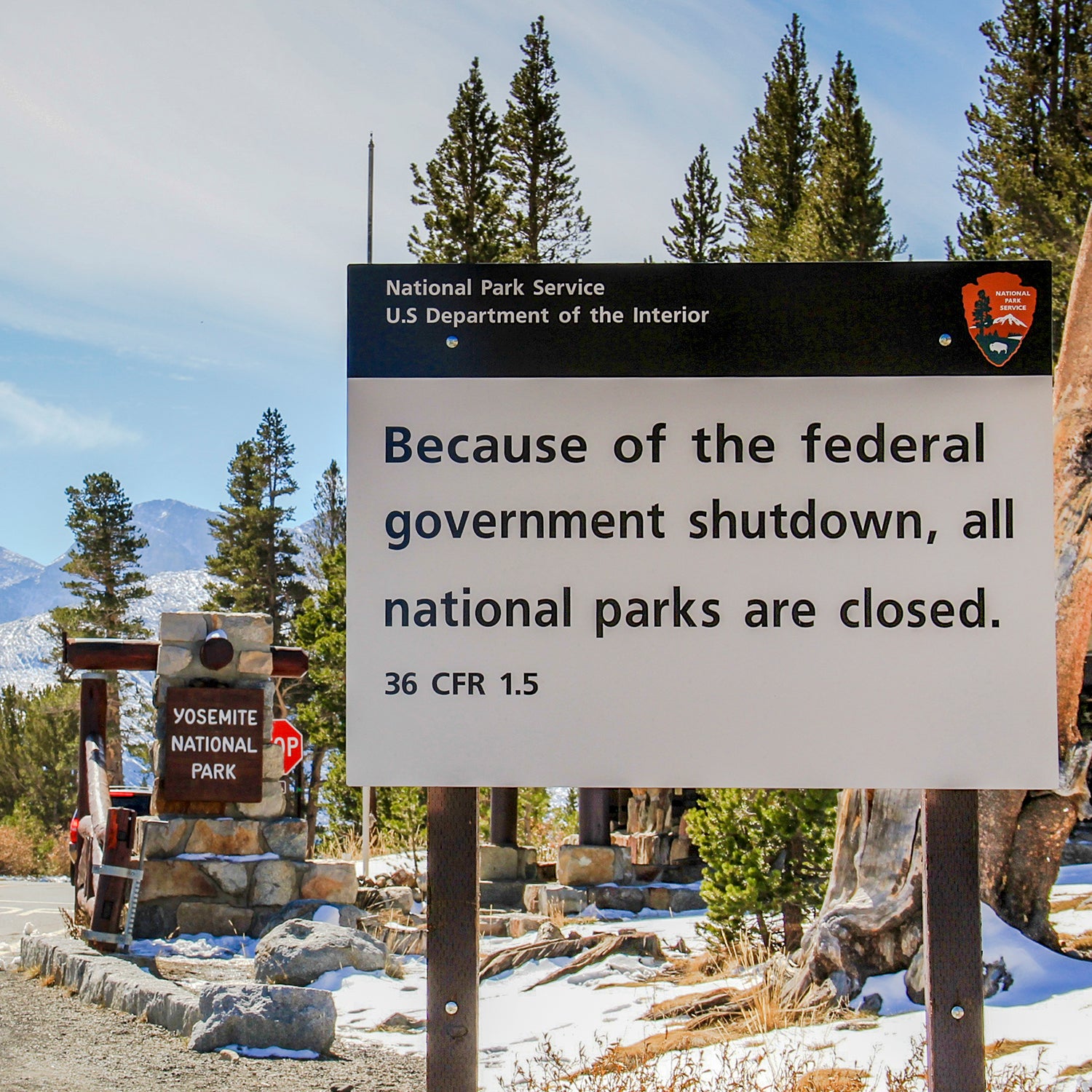We all remember what happened last time the government shut down. It was 2013 and then-President Barack Obama had recently won reelection. A group of Tea Party conservatives led by Texas Senator Ted Cruz had refused to fund the government unless Obamacare was repealed. So over , Republicans took most of the heat for the 800,000 furloughed staff and the shuttering of agencies like FEMA, the FDA, and, most critically, the country’s national parks.
More than . Campers were shooed from campsites. Mule trips to the Grand Canyon were canceled. Old Faithful was still faithful, there just wasn’t anyone to see it. The most troubling picture for Republicans, however, were the all the way from Mississippi to visit memorials on Washington D.C.’s National Mall. They had made the once-in-a-lifetime trip to visit monuments dedicated to heroes like them, but when they arrived, they were met with barricades and signs reading: “Because of government SHUTDOWN all National Parks are CLOSED.”
This time, Republicans are trying to avoid that mess. Congress still has until the end of Friday to fund the government, but Republicans, who the majority of people , for Congress’s inability to keep the lights on, are trying to temper the backlash by keeping the national parks open. Secretary of the Interior Ryan Zinke is reportedly working on a plan to do so, despite the fact that nearly all his staff will be furloughed. There’s no list yet of what parks or monuments would remain open this time around, but Department of the Interior spokeswoman Heather Swift has made sure to say the memorial along the National Mall would be open. Regarding the other parks and public lands, Swift that the government “will still allow limited access wherever possible,” but “services that require staffing and maintenance such as campgrounds, full service restrooms, and concessions will not be operating.”
The idea is completely about saving political face. And in theory, it’s a good one. The reality, though, to both the parks themselves and their visitors, former park leaders say. At best, it’s a logistical nightmare.
Of the nearly 25,000 park staff, only about 3,000 would come to work, mostly law enforcement, emergency responders, and some of those in leadership positions in D.C. and regional offices. Missing would be nearly all park rangers, maintenance workers, and educational guides. The visitor centers would be closed, as would full-service restrooms. It’s hard to keep people or the places safe with that few people. “It’s naive for folks to believe that we can protect these assets and do what is required by law with just law-enforcement staff. It’s not realistic,” former-Secretary of the Interior Sally Jewell the ���ٱ����Գپ���.��
Then there’s the fact that people are simply confused about what Zinke’s plan is. The DOI does have a shutdown contingency plan, but it’s only and is often vague. “As a rule,” the plan reads, “staffing will be held to the very minimum for the protection of life, property, and public health and safety.”
So it’s not clear—to either the public or park staff—what to expect Saturday in the event of a shutdown. The Washington Post said there was “wide confusion across the park system.” , people will still be able to drive through places like Glacier National Park. Florida’s Everglades will remain open to birders. Same with Death Valley, which is now seeing some 80,000 visitors a month. “We don’t have a plan yet,” Abby Wines, spokeswoman for California’s Death Valley National Park, told the Post. “We just got a memo about this yesterday.”
If people are let loose in parks with shuttered visitors centers and no rangers, what if someone gets lost?
This uncertainty leads to questions. One example: If the parks will supposedly be open, and people will presumably be present, how’s that going to work? On the spectrum of vital services, restrooms might score low. “But what happens when a person pulls up to a restroom and it’s closed? Well they find a place to go anyway,” says Phil Francis, a former National Park Service superintendent and now chair of the the Coalition to Protect America’s National Parks. It might be a glib point, but Francis raised it to illustrate the type of nuance in planning needed to keep parks operating.
On a more serious note, if people are let loose in parks with shuttered visitors centers and no rangers, what if someone gets lost? In the 21-day government a bunch of campers were stranded in a blizzard in the Shenandoah National Park backcountry. That was when parks were closed to the public. This time around, the updated contingency plan aims to prevent that by saying that emergency responders “may be called back to duty if an emergency situation arises.”
The other concern is for the land and the artifacts the park designations were intended to protect in the first place. The NPS’s plan gives superintendents the discretion to close sensitive areas that might be destroyed or looted. But enforcing such closures will fall to the few remaining law enforcement officers on staff. “It is concerning that when there are fewer staff members that some unsavory character might take advantage of the situation,” Francis says.
When the government shuts down and phones at the IRS or the Social Security Administration don’t get answered, it’s annoying. But when the government steps away from its management of our most iconic places? That feels more like neglect. It’s easy to understand why Zinke and the Trump Administration are so set on keeping parks open. And while the idea—like the idea of a functioning government—is a nice one, the reality of doing it with so few staff, with such little preparation, has the chance to go very wrong.


